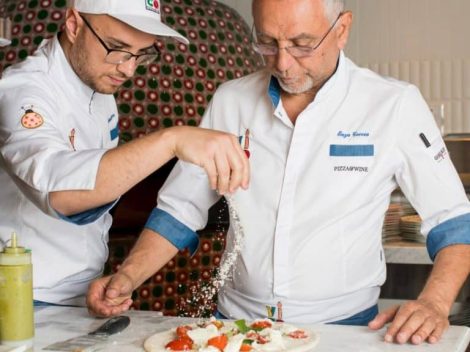by Marina Alaimo
If you want to feel the heartbeat of Naples, you must come to the Spanish Quarters. This intricate network of steep alleys descends from the Sant’Elmo hill, visible in the few open stretches, down to the shopping street of Via Toledo. These quarters have long served as a crucial link and shortcut between the city’s upper part, once sparsely populated and rich with convents like the marvelous Certosa di San Martino, and the lower part around Piazza del Plebiscito to Piazza Dante, filled with important shops and the social life of wealthy families. Of course, many things have changed today, and the influx of high tourist numbers often has a swift and impactful influence.
Spanish Quarters of Naples: history and transformation
This ancient area, named after the viceroy Don Pedro da Toledo who created it in the 16th century to house the Spanish army, has seen its fair share of decline. The Kingdom of Naples fell into decline in 1501 with Federico I of Aragon, succeeded by Spanish royalty and a long line of viceroys. The Spanish soldiers, known for their vices, were the origin of the area’s decay, fostering prostitution, gambling, and violence. In recent decades, organized crime has further tainted the neighborhood’s reputation, keeping tourists and residents from other areas at bay.

Mural Dedicated to Diego Armando Maradona in the Spanish Quarters of Naples
About ten years ago, however, the residents of these streets courageously embraced change, determined to breathe new life into the area and attract visitors. This led to a historic turnaround. Many Neapolitans began exploring these vibrant alleys, discovering a world full of lively shops and homes, ready to welcome them. Many ground-floor apartments have transformed into food spots and various shops, while old establishments of great interest still thrive. The proliferation of B&Bs speaks volumes about tourists and travelers loving to stay here, enjoying the natural vibrancy and positivity of the locals.
Coffee Culture in the Spanish Quarters
Let’s start with coffee, deeply rooted in Neapolitan culture and the desire for hospitality and sharing. Don Café is a charming little coffee shop where Giuseppe Schisano prepares coffee in the traditional Neapolitan style, offering various sizes to meet different demands. Outdoor tables at Vico Lungo Teatro Nuovo, 39, are always busy – the street is named after the glorious Teatro Nuovo where Bellini and Donizetti, lovers of Naples, performed. Besides coffee, Giuseppe serves classic cocktails and his signature Cocktail Napoli 75, a twist on the French 75 made with gin, fresh lemon juice, limoncello, and Falanghina sparkling wine. He blends his coffee using varieties from Guatemala, Costa Rica, Brazil, and Uganda, and when time permits, he even roasts the beans himself. His beautifully designed coffee cart, a tiny coffee shop on wheels, often roams Via Toledo.
Bar Aloia
Next is Bar Aloia, boasting "the tradition of coffee in the Spanish Quarters since 1980" at Via Emanuele De Deo 9, on the corner with Vico Lungo del Gelso. The owner, Mario Aloia, is very friendly, and you'll notice a constant flow of locals exchanging colorful conversations and neighborhood gossip.
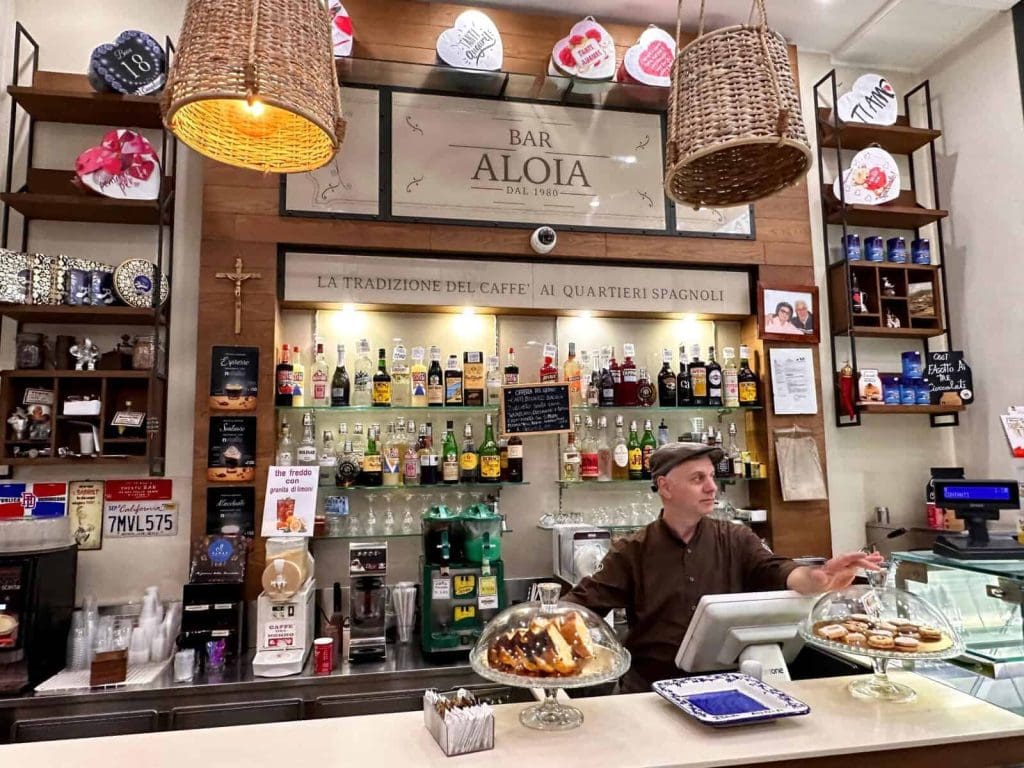
Tina and Angelo Scognamiglio's Fruit and Vegetable Shop
Also on Via Lungo del Gelso, named after the mulberry grove where Spanish soldiers sought illicit activities, is Tina and Angelo Scognamiglio’s fruit and vegetable shop at number 92. Here for forty years, they are dreamers who want an inclusive world colored by smiles. They offer cooking classes in the back of their shop for locals and others who want this experience. These precious life lessons break down cultural and racial barriers through cooking and food, bringing together immigrants and tourists. Tina dissolves all prejudices and fosters dialogue.
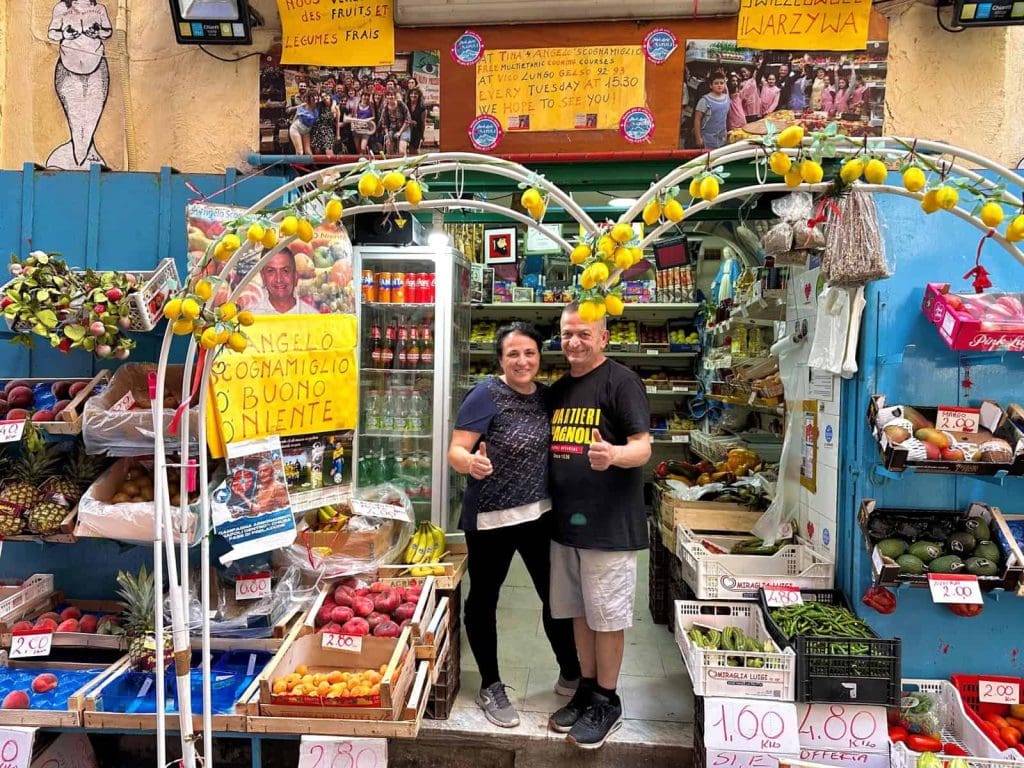
Barrucchiere Quartieri Spagnoli
Feeling like a drink? Barrucchiere Quartieri Spagnoli is a unique spot divided into two locales, one a hair salon and the other a bar with outdoor tables on Vico Lungo del Gelso. Known for the "suspended hairstyle," inspired by the suspended coffee tradition, they collect tips from customers to offer a free hairstyle to someone in need each week. Salvatore Visone opened the adjacent bar, attracting many from breakfast to aperitifs and lunch snacks.
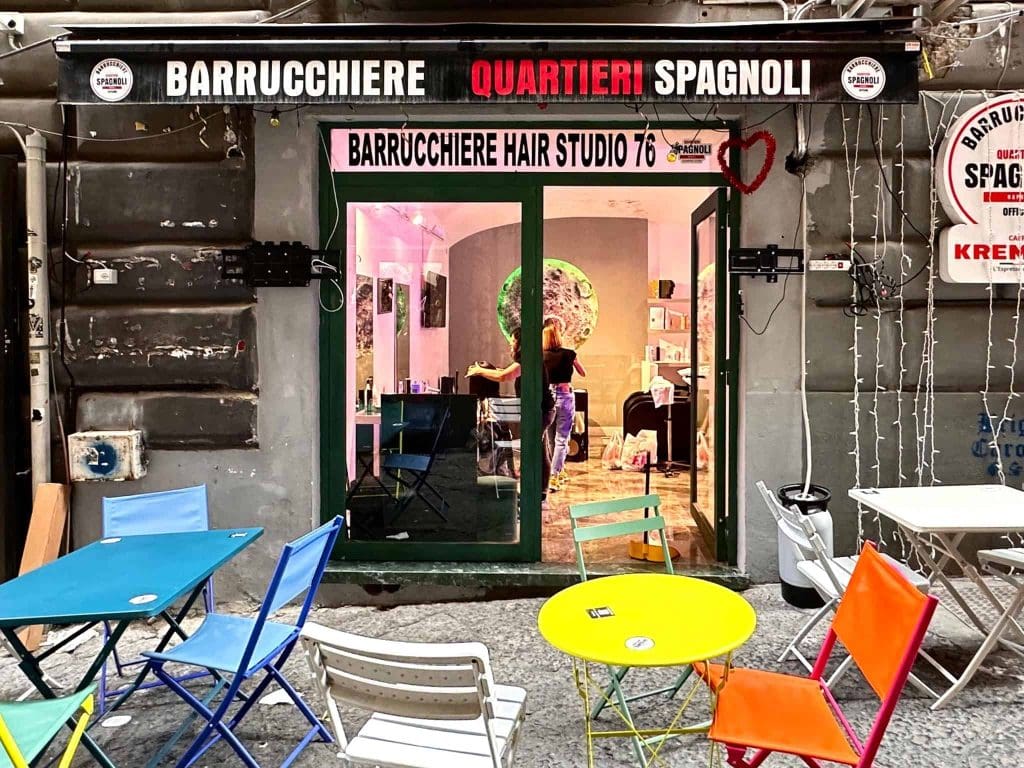
Pizza and Street Food in the Spanish Quarters
Visitors to a popular Neapolitan area naturally seek street food and pizza. Pizza, originally a street food, is still prevalent near the famous Largo Maradona, where you can admire the mural of the "Pibe de Oro," a pilgrimage site. Pino Lucignolo's pizzeria, with its neat and well-maintained counter on the street, serves pizza folded like a wallet to enjoy on the go or take away, a tradition still very much alive in these alleys.
A must-visit is the historic Pizzeria Brandi from the late 19th century, at Salita Sant’Anna di Palazzo 1/2. Here, the alley opens into the elegant Via Chiaia, a few meters from Piazza del Plebiscito and the Teatro Regio San Carlo. Famous and welcoming, the upstairs historic dining room retains the atmosphere of an elegant 1960s pizzeria, unchanged in furnishings and hospitality. The alley is lined with tables offering a different experience, enjoying pizza in a colorful and intimate city corner.
Trattorias, Wine Bars, and Shops
Trattoria San Ferdinando at Via Nardones 117 offers Neapolitan cuisine and is popular after performances at the nearby San Carlo. The warm and welcoming dining room serves both land and sea dishes, guided by the catch of the day. Must-try dishes include pasta and potatoes, pasta and beans, spaghetti with clams, crab pasta, and seafood sauté.
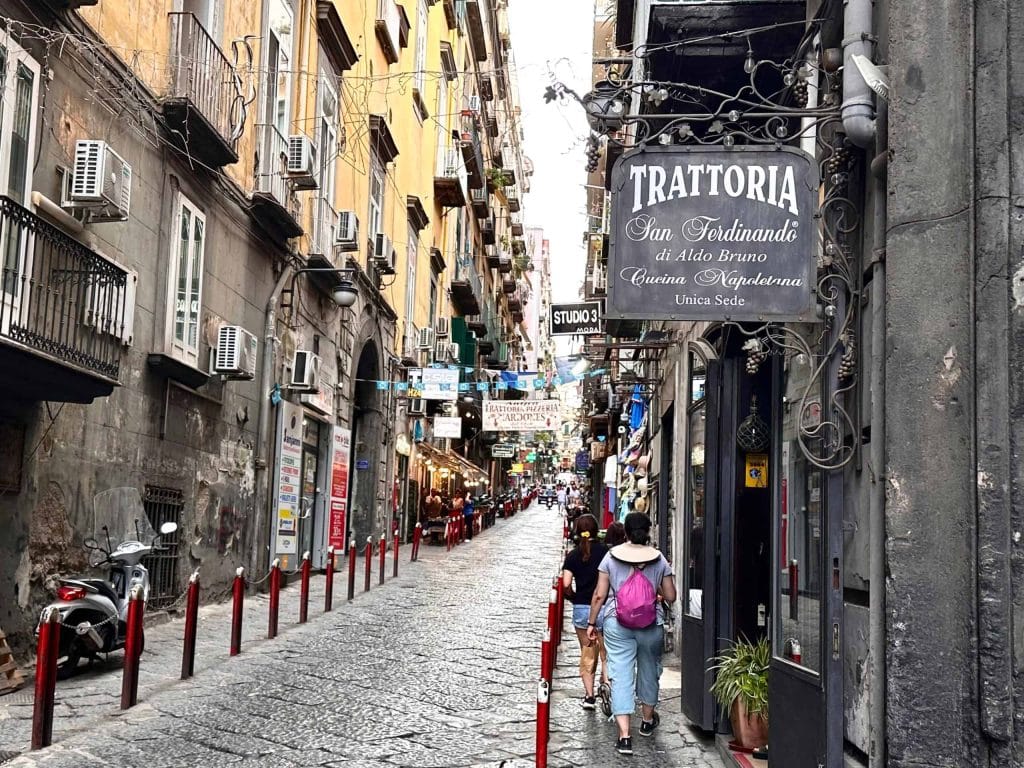
For natural wine lovers, Puteca Wine Bar by Claudio Tramontano is well-known among locals and tourists. Claudio's charm lies in his ability to welcome and share the pleasure of natural wines from around the world, at Gradoni di Chiaia. Tables precariously balanced on the historic steps of the Spanish Quarters, right where they emerge under the Chiaia bridge. Claudio has selected both renowned and unknown labels – the best approach is to let him guide you.
Among the historic and identity shops, Mario Talarico’s umbrella shop is worth a visit, maintaining a tradition of high craftsmanship in Naples, offering umbrellas in a wide range of styles from fun to refined.

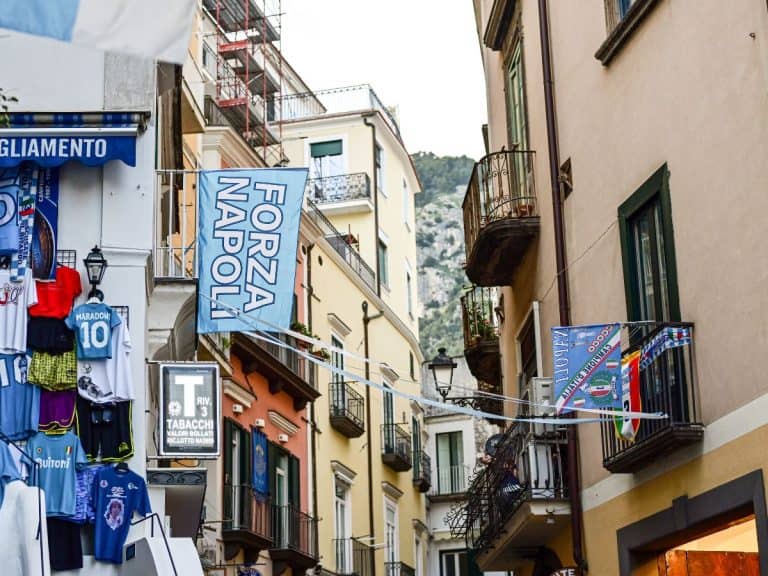
 Non-alcoholic wines? Call them what you want, but they’re still a derivative of wine.” An Interview with Martin Foradori
Non-alcoholic wines? Call them what you want, but they’re still a derivative of wine.” An Interview with Martin Foradori The 8 best Trentodoc wines chosen by Gambero Rosso
The 8 best Trentodoc wines chosen by Gambero Rosso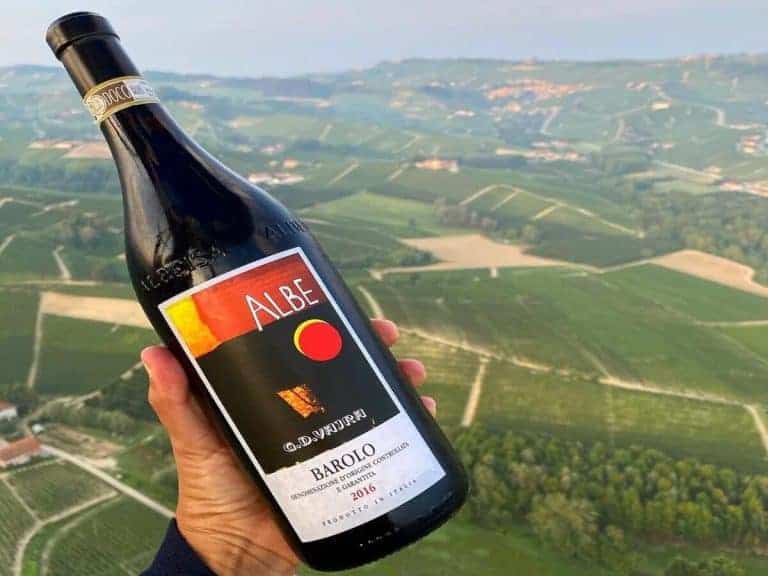 A Piedmont wine enters the top ten of Wine Spectator's "Top 100"
A Piedmont wine enters the top ten of Wine Spectator's "Top 100" Sparkling wines surpass still wines in Italian out-of-home consumption. Most popular during the aperitif
Sparkling wines surpass still wines in Italian out-of-home consumption. Most popular during the aperitif American Barbecue wins a Michelin star for the first time in history
American Barbecue wins a Michelin star for the first time in history

